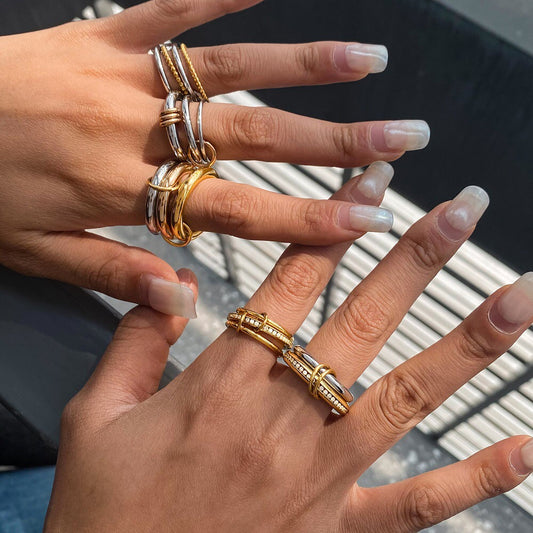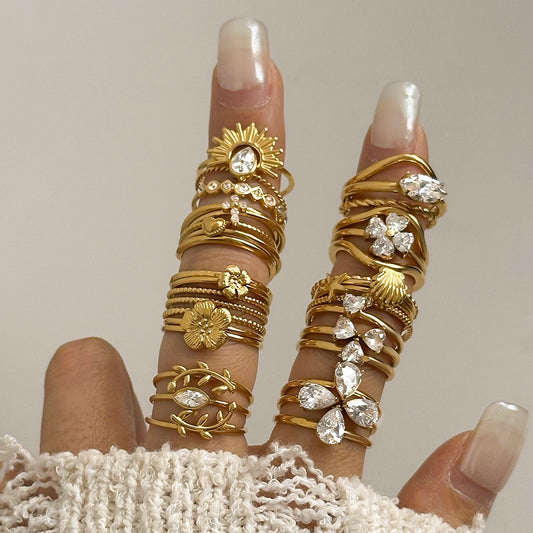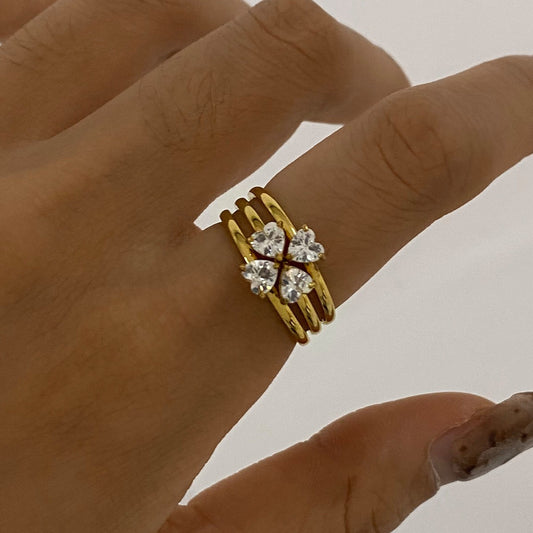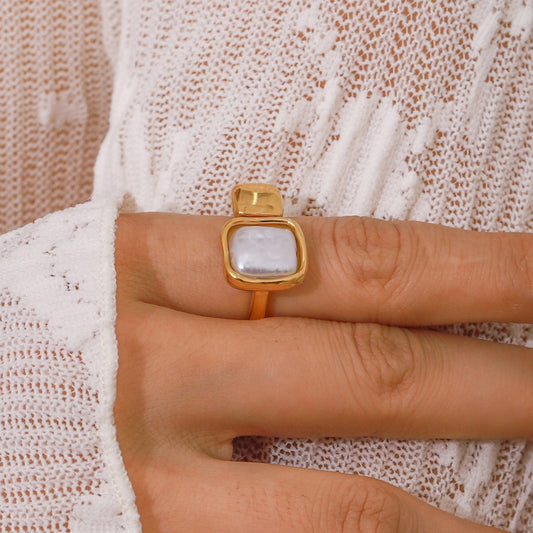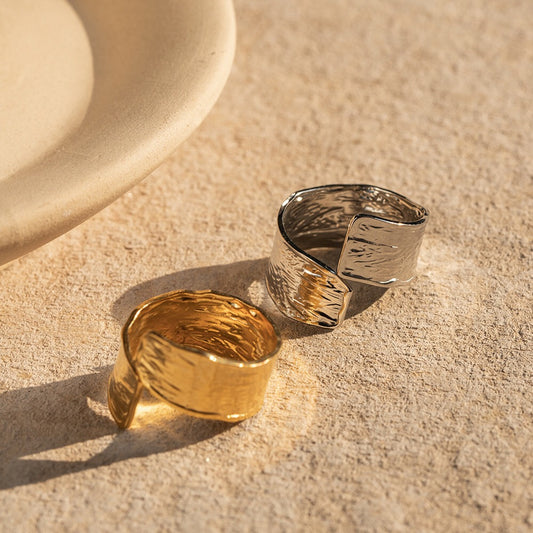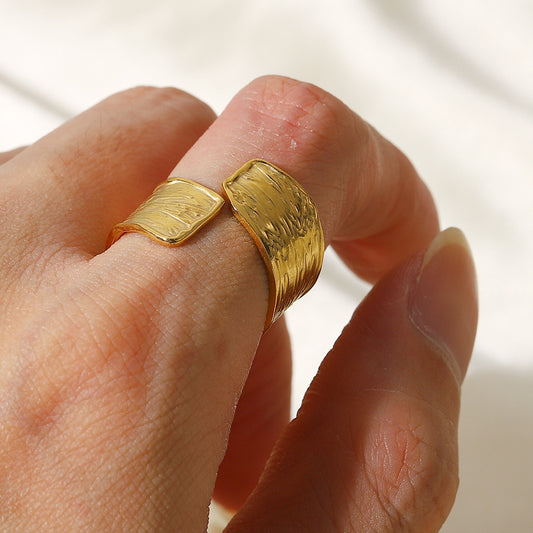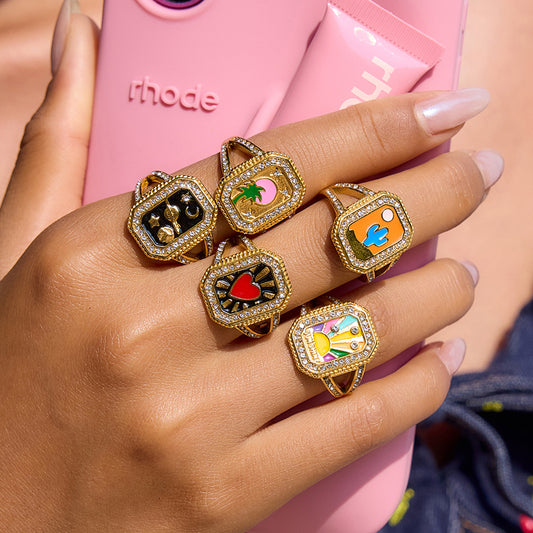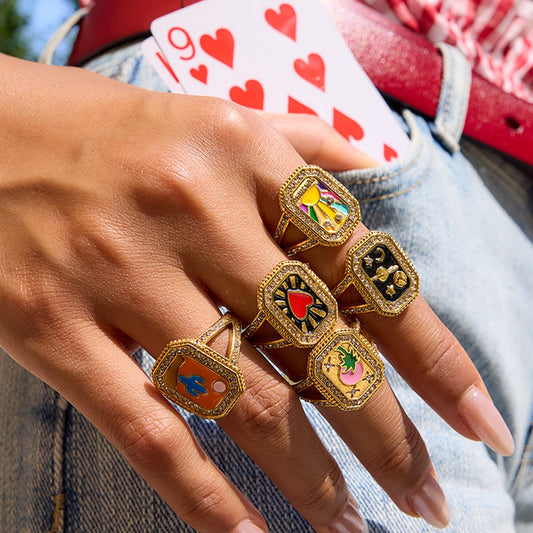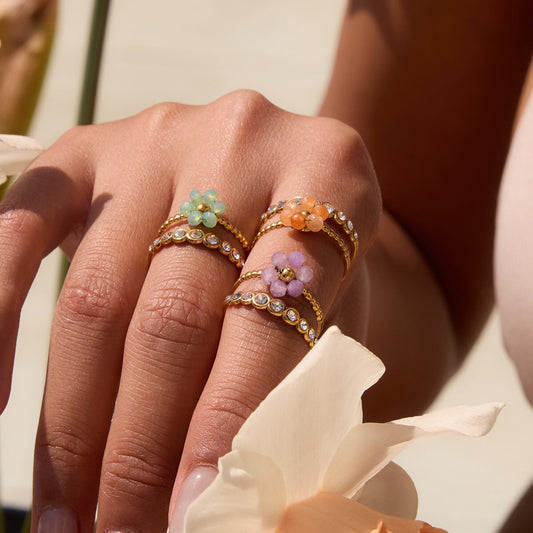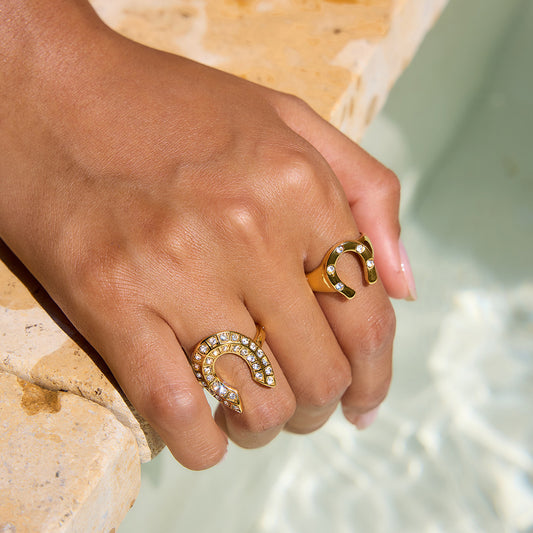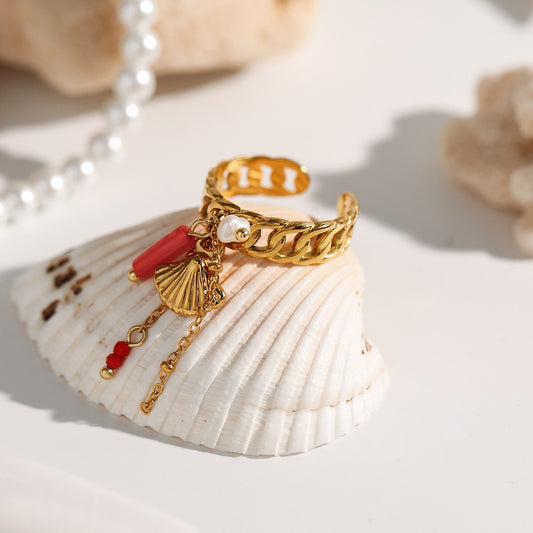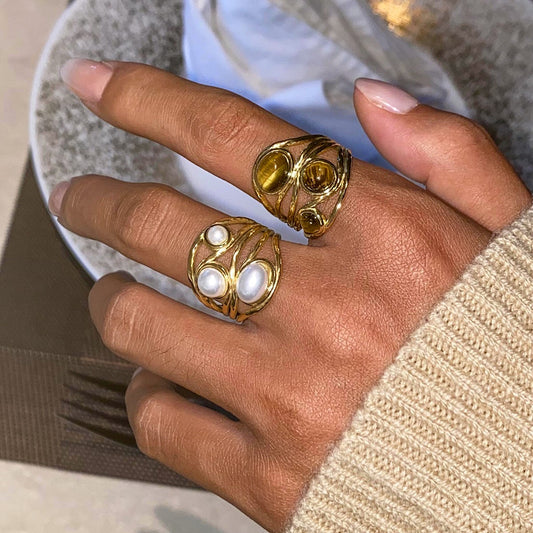A blue diamond ring is more than a piece of jewelry—it’s a masterpiece of nature, a symbol of exclusivity, and a testament to bold, unforgettable style. With their mesmerizing hues (ranging from soft sky blue to deep, velvety royal blue), blue diamonds are among the rarest gemstones on Earth—only a handful are mined each year, making them far more exclusive than white diamonds. The global diamond market size was $97.57 billion in 2024 & is projected to grow from $102.10 billion in 2025 to $138.66 billion in 2032 at a CAGR of 4.5%. From engagement rings fit for royalty to statement bands that elevate everyday looks, a blue diamond ring carries an air of luxury and meaning that’s impossible to replicate. It’s the perfect choice for anyone who wants their jewelry to tell a story of uniqueness, trust, and enduring love.

What Makes a Blue Diamond Ring Special?
Blue diamonds owe their extraordinary appeal to their rarity, natural color, and symbolic weight. Unlike dyed or treated gemstones, their blue hue is entirely natural—caused by boron impurities trapped in the diamond’s structure during its formation (millions of years ago, deep within the Earth). This natural origin, combined with their scarcity, makes blue diamond rings true treasures.
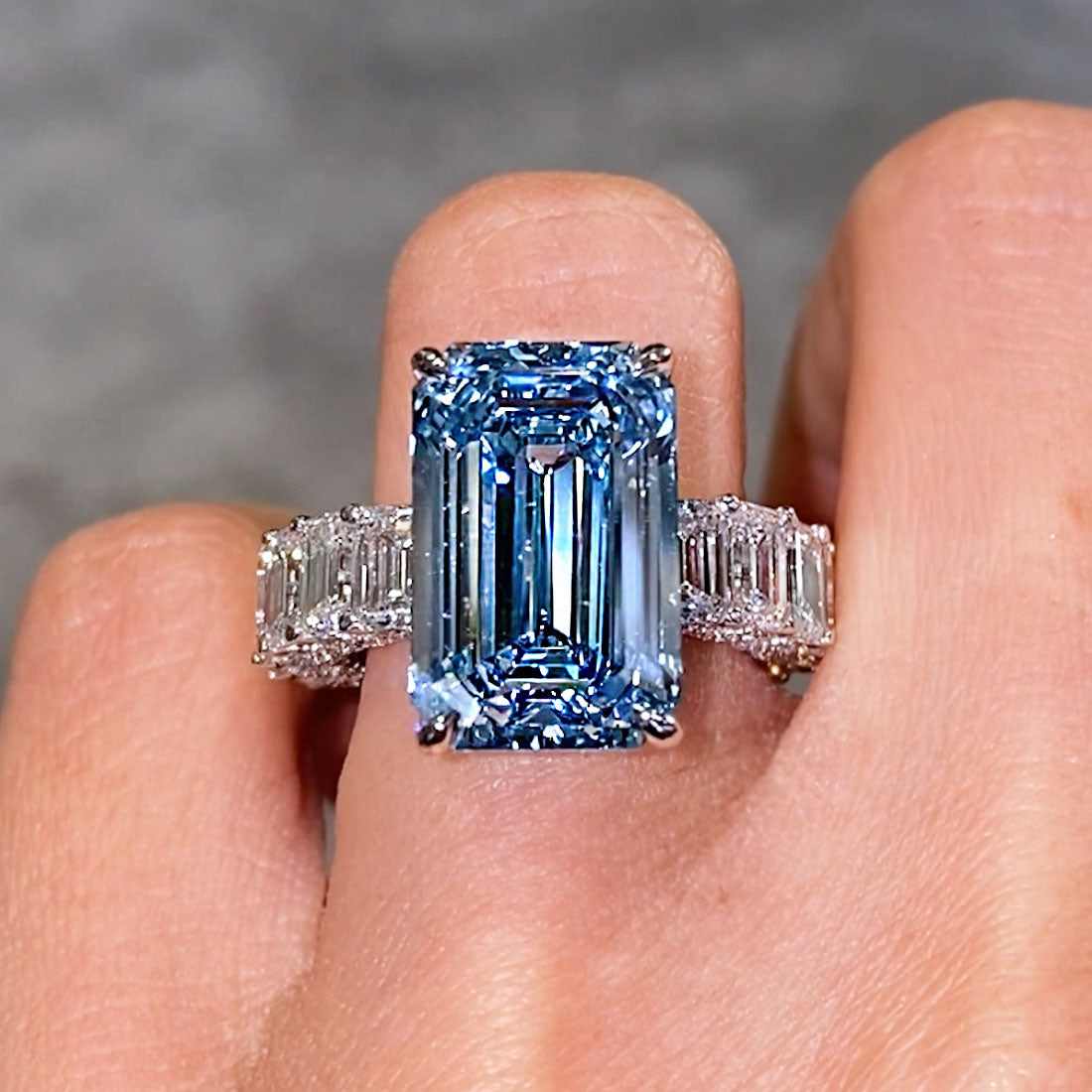
Core Traits of Blue Diamond Rings
-
Rarity Beyond Compare: Only 1 in 100,000 diamonds mined is a fancy colored diamond—and blue diamonds are among the rarest of these. The most famous blue diamond, the Hope Diamond (a 45.52-carat vivid blue stone), is a testament to their scarcity. This rarity makes blue diamond rings not just jewelry, but investments that often appreciate in value.
-
Captivating Color Grades: Blue diamonds are graded by color intensity, from subtle to striking:
-
Fancy Light Blue: Soft, pale blue—ideal for those who want a subtle pop of color.
-
Fancy Blue: Rich, medium blue—the most popular grade, balancing vibrancy and accessibility.
-
Fancy Intense Blue: Deep, saturated blue—rare and highly sought-after for its bold hue.
-
Fancy Vivid Blue: The most valuable grade—bright, electric blue that catches light and turns heads.
-
Symbolism of Trust & Wisdom: Blue has long been linked to trust, loyalty, and clarity of thought—making a blue diamond ring a meaningful choice for engagements (symbolizing a faithful partnership) or anniversaries (celebrating a wise, enduring love).
-
Versatile Luxury: Despite their rarity, blue diamond rings are surprisingly versatile. A small fancy light blue solitaire works for everyday wear, while a large fancy vivid blue statement ring elevates formal events—proving luxury can be lived in.

Popular Styles of Blue Diamond Rings
Blue diamonds shine in a range of designs, from minimalist solitaires to opulent halos. Here are the most beloved styles, tailored to different tastes:
1. Blue Diamond Solitaire Ring (Timeless Elegance)
The classic choice—letting the blue diamond’s hue take center stage:
-
Design: A single blue diamond (round, oval, or cushion-cut) in a simple prong setting (4 or 6 prongs) in white gold, platinum, or yellow gold. Stone sizes: 0.5–2 carats (small enough for daily wear, large enough to showcase the blue hue).
-
Best For: Minimalists, engagement rings, or anyone who wants the diamond’s color to be the star. White gold or platinum settings make the blue pop, while yellow gold adds warmth to softer blue shades.
-
Why It Works: The solitaire setting eliminates distractions, highlighting the blue diamond’s natural beauty. A fancy blue solitaire in white gold is understated yet luxurious—perfect for someone who values quiet elegance.

2. Blue Diamond Halo Ring (Glamorous Sparkle)
For maximum impact—ideal for engagement rings or special occasions:
-
Design: A center blue diamond surrounded by a “halo” of tiny white diamonds (or smaller blue diamonds) in white gold or platinum. The halo makes the center diamond look larger and amplifies its sparkle.
-
Best For: Brides-to-be, lovers of glamorous jewelry, or anyone who wants a ring that feels “royal.” A fancy intense blue diamond in a white diamond halo is especially striking—the contrast between blue and white makes the hue pop.
-
Why It Works: The halo adds drama without overshadowing the blue diamond. It’s perfect for weddings or galas, where the ring will catch light and spark conversations.
3. Blue Diamond Three-Stone Ring (Meaningful Symbolism)
Three-stone rings represent “past, present, future”—and blue diamonds add a layer of depth:
-
Design: A center blue diamond flanked by two smaller white diamonds (or blue diamonds) in white gold or platinum. The three stones symbolize your journey together, from how you met to your future.
-
Best For: Anniversaries (especially 40th, as blue is the 40th anniversary gem), couples celebrating a milestone, or anyone who wants a ring with emotional weight.
-
Why It Works: The blue diamond’s symbolism of trust pairs perfectly with the three-stone design’s focus on commitment. It’s a ring that tells a story every time you look at it.
4. Blue Diamond Statement Ring (Bold & Unapologetic)
For those who want to make a style statement:
-
Design: A large blue diamond (2+ carats) in an ornate setting—think a cocktail ring with a cushion-cut fancy vivid blue diamond, or a vintage-inspired design with filigree metalwork and accent sapphires.
-
Best For: Fashion-forward wearers, red-carpet events, or anyone who loves to stand out. Statement rings often use fancy vivid blue diamonds for maximum color impact.
-
Why It Works: A bold blue diamond statement ring is unapologetically luxurious. It’s the perfect accessory for someone who isn’t afraid to embrace color and make their style known.

5. Blue Diamond Stackable Band (Subtle Color)
For a more understated take on blue diamonds:
-
Design: A thin band (1–2mm wide) with tiny blue diamond chips or a single small blue diamond (3–5mm) in white gold or platinum. It’s designed to be stacked with other bands (plain metal, white diamond) for a customized look.
-
Best For: Minimalists, everyday wear, or anyone who wants to dip their toes into blue diamond jewelry without investing in a large stone.
-
Why It Works: Stackable blue diamond bands add a subtle pop of color to your stack. They’re lightweight, comfortable, and easy to mix with other jewelry—perfect for someone who loves layered looks.
How to Choose the Perfect Blue Diamond Ring
Selecting a blue diamond ring requires focusing on color (the most critical factor) and aligning it with your style and budget. Follow these steps to find your ideal piece:
Step 1: Prioritize Color Intensity (The Most Important Factor)
Blue diamonds are valued first and foremost for their color. Here’s what to know:
-
Fancy Light Blue: Affordable and subtle—great for everyday wear or first-time blue diamond buyers.
-
Fancy Blue: The sweet spot—rich color that’s noticeable but not overwhelming. Perfect for engagement rings or anniversary gifts.
-
Fancy Intense/Vivid Blue: Rare and expensive—ideal for collectors or those seeking a showstopping piece. These hues are so vibrant they look almost electric.
For most buyers, fancy blue is the best balance of color, beauty, and budget.
Step 2: Choose the Right Cut
A well-cut blue diamond enhances its color and sparkle. The best cuts for blue diamonds are:
-
Cushion-Cut: Soft, rounded corners that maximize color—perfect for showing off a blue diamond’s warmth.
-
Oval-Cut: Elongated shape that makes the diamond look larger and spreads color evenly across the stone.
-
Radiant-Cut: Square shape with trimmed corners that balances sparkle and color—great for modern styles.
Avoid overly deep or shallow cuts—they can make the blue diamond look dull or washed out.
Step 3: Pick a Metal That Complements the Diamond
The metal setting should enhance the blue diamond’s hue:
-
White Gold/Platinum: Cool metals create a striking contrast with blue diamonds, making the hue pop. Perfect for fancy intense or vivid blue diamonds.
-
Yellow Gold: Adds warmth to softer blue shades (fancy light blue). It creates a vintage-inspired look that’s perfect for solitaire or three-stone rings.
-
Rose Gold: A romantic twist—rose gold’s pink undertones soften the blue, creating a delicate, feminine look. Great for stackable bands or small solitaires.
Step 4: Consider Your Lifestyle
Your daily routine will guide the ring’s design:
-
Active Lifestyles (Gym, Cooking, Hiking): Choose a bezel-set blue diamond (no prongs to catch) in a thick band (2–3mm) for durability. Avoid large statement rings or pavé details that can trap dirt.
-
Office Jobs: A small solitaire or stackable band works perfectly—subtle enough for professional settings but still adds color.
-
Special Occasions: A halo or statement ring is ideal—these designs are meant to shine at parties, weddings, or milestones.
Step 5: Set a Realistic Budget
Blue diamond rings range in price from \(5,000 to \)500,000+, depending on color intensity, carat weight, and metal. Here’s how to allocate:
-
Budget \(5,000–\)20,000: Fancy light blue diamond (0.5–1ct) in white gold or platinum (solitaire or stackable band).
-
Budget \(20,000–\)100,000: Fancy blue diamond (1–1.5ct) in 14k white gold or platinum (solitaire, halo, or three-stone).
-
Budget $100,000+: Fancy intense or vivid blue diamond (1.5ct+) in 18k gold or platinum (halo, statement, or custom design).
Money-Saving Tip: Opt for a slightly smaller carat weight with better color intensity. A 1ct fancy blue diamond will look more vibrant than a 1.5ct fancy light blue diamond—at a similar price.
How to Care for a Blue Diamond Ring
Blue diamonds are durable (10 on the Mohs scale, same as white diamonds), but proper care will keep your ring looking its best for decades:
Daily Care Tips
-
Remove Before Activities: Take off the ring before swimming (chlorine can damage metal settings), showering (soap builds up on the diamond), working out (sweat can tarnish metal), or doing chores (cleaning products scratch metal).
-
Wipe After Wear: Gently wipe the diamond and band with a soft microfiber cloth to remove oil, lotion, or dirt—this keeps the diamond’s color bright and the metal shiny.
-
Avoid Harsh Chemicals: Keep the ring away from perfume, hairspray, and nail polish remover—these can dull the metal or leave a film on the diamond.
Weekly Deep Cleaning
-
Mix warm water with a drop of mild dish soap (or diamond-specific cleaner) in a small bowl.
-
Soak the ring for 10–15 minutes—this loosens dirt from the diamond’s setting and the band.
-
Gently scrub the diamond and setting with a soft-bristled toothbrush (focus on the back of the diamond, where dirt often hides).
-
Rinse under warm running water and pat dry immediately with a microfiber cloth—never air-dry, as water spots can form.
-
For extra shine: Polish the metal band with a metal-specific cloth (white gold cloth for white gold, yellow gold cloth for yellow gold).
Annual Maintenance
-
Professional Cleaning: Take the ring to a jeweler once a year for a deep clean—they’ll use ultrasonic tools to remove dirt you can’t reach at home and polish the metal to restore its shine.
-
Prong Check: If your ring has a prong setting, ask the jeweler to inspect the prongs—loose prongs can cause the blue diamond to fall out. Tightening them regularly is essential.
-
Appraisal: For high-value blue diamond rings, get an annual appraisal to update its value (blue diamonds often appreciate over time, making them a smart investment).
Frequently Asked Questions About Blue Diamond Rings
Q1: Are blue diamonds real diamonds?
A: Yes! Blue diamonds are 100% natural diamonds—they form in the Earth just like white diamonds, but with boron impurities that give them their blue color. They’re not “fake” or treated (unless specified as such—always buy from a reputable jeweler to ensure authenticity).
Q2: Do blue diamonds fade over time?
A: No—blue diamonds’ color is entirely natural and stable. They won’t fade with normal wear, even if exposed to sunlight or heat (unlike some colored gemstones, like amethyst). With proper care, your blue diamond’s hue will stay bright forever.
Q3: Can blue diamond rings be resized?
A: Yes—most blue diamond rings can be resized by a skilled jeweler. Plain bands or solitaire settings are easiest to resize; halo or three-stone rings may require more work (jewelers may need to adjust the setting to keep the diamond secure). Always choose a jeweler with experience working with colored diamonds.
Q4: Are blue diamond rings a good investment?
A: Yes—blue diamonds are one of the best investments in the jewelry world. Their rarity means their value often increases over time (white diamonds’ value is more volatile). A high-quality blue diamond ring bought today may be worth significantly more in 10–20 years.
Q5: Can I wear a blue diamond ring with other jewelry?
A: Absolutely! Blue diamonds pair beautifully with other metals and gemstones:
-
White Gold/Silver Jewelry: Create a cohesive look by pairing a blue diamond ring with a white gold necklace or earrings.
-
Yellow Gold Jewelry: The contrast between blue and yellow adds a vintage, luxurious vibe—try a blue diamond ring with a yellow gold bracelet.
-
Colored Gemstones: Blue diamonds complement white sapphires (for extra sparkle) or emeralds (for a rich, jewel-toned look).
Conclusion: A Blue Diamond Ring—Luxury With Meaning
A blue diamond ring is more than a luxury accessory—it’s a rare treasure that carries symbolism, beauty, and value. Its vivid hue tells a story of uniqueness, its rarity speaks to exclusivity, and its durability ensures it will be a part of your life (and possibly your family’s legacy) for decades.
Whether you choose a simple solitaire, a glamorous halo, or a meaningful three-stone design, a blue diamond ring is a statement of bold style and enduring love. It’s a reminder that the most precious things in life are the ones that stand out—that dare to be different.
For anyone who wants their jewelry to be as unique as their story, a blue diamond ring is the perfect choice. It’s not just a ring—it’s a masterpiece.






